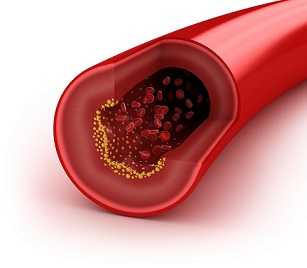Cholesterol is a waxy, fat-like substance that your body needs. When you have too much cholesterol in your blood, it can build up on your artery walls. Too much cholesterol puts you at risk for heart disease and stroke, two leading causes of death in the United States. But you can take steps to manage your cholesterol levels and lower your risk.
Get more quick facts about high cholesterol.
There are no signs or symptoms of high cholesterol. Getting your cholesterol checked with a simple blood test is the only way you can know if you are at higher risk for cardiovascular disease.

When you have too much cholesterol in your blood, it can build up on your artery walls and put you at risk for heart disease and stroke.
Learn About Cholesterol
Educate Others
Facts and Statistics
Featured Items
Vital Signs: Preventing Stroke Deaths
About 80% of strokes are preventable. Yet new data shows that after decades of decline, progress has slowed in preventing stroke deaths in 3 out of 4 U.S. states. Learn what health care systems, health professionals, and everyone can do to prevent strokes and stroke death.
Vital Signs: Preventable Deaths from Heart Disease and Stroke
Nearly 1 in 3 deaths in the U.S. each year is caused by heart disease and stroke. At least 200,000 of these deaths could have been prevented through changes in health habits, such as stopping smoking, more physical activity, and less salt in the diet; community changes to create healthier living spaces, such as smoke-free areas and safe places to exercise; and managing high blood pressure, high cholesterol, and diabetes.
Vital Signs: High Blood Pressure and Cholesterol
The CDC Vital Signs program is a call to action each month concerning a single, important public health topic. CDC Vital Signs for February focuses on cardiovascular disease, specifically control of hypertension and cholesterol.
References
- CDC. Vital signs: prevalence, treatment, and control of high levels of low-density lipoprotein cholesterol—United States, 1999–2002 and 2005–2008. MMWR. 2011;60(4):109–14.
- Mozaffarian D, Benjamin EJ, Go AS, Arnett DK, et al. Heart Disease and Stroke Statistics-2015 Update: A Report from the American Heart Association. Circulation. 2014 Dec 17 [Epub ahead of print].
- Page last reviewed: September 5, 2017
- Page last updated: September 5, 2017
- Content source:



 ShareCompartir
ShareCompartir

